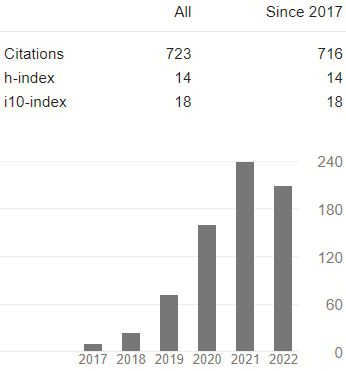ANALISIS PEMENUHAN KONSEP CURRENT PAYMENT DAN FINAL LIABILITY DALAM PENGHITUNGAN PPH PASAL 25 DAN PENGENAAN SANKSI TERKAIT
DOI:
https://doi.org/10.25170/jara.v13i1.489Keywords:
self assessment system, PPh section 25, final liabilityAbstract
Nowadays about 80% of APBN (National Budget) revenue is rooted from tax revenue. Therefore, Directorate General of Tax Department (Dirjen Pajak/DJP) as the organizer of tax revenue should straighten themselves up constantly in order that they could reach the revenue target which is burdened. One of the actions is through tax reform system which relies on self-assessment system. People, in this system, are the most in determining of the activity that they should do by themselves connected to the tax; starting from the registration of tax obligatory, counting the amount of owed tax that they have to pay, pay the tax by themselves to the bank or post office and report it to KPP (tax service office). Tax revenue is achieved, among others, from the tax payment and also imposition payment if the tax obligatory has broken the certainty of taxation regulations. One of them is income tax section 25 payment; it is tax payment on fiscal year in accordance with current payment concept. Each month the payment of PPh section 25 is counted based on PPh of SPT a year before then minus tax credit and divided in 12, in other words; based on the last year benefit which is not reflecting the actual condition of tax obligatory (fictive stelsel), and in the end of the year; it will give the influence in the owed tax. Moreover, this is added by imposition of doubt in case of PPh section 25 that unpaid or minus in payment in the form of interest on 2% each month on PPh section 25 that unpaid or minus payment. Those two things about is not in accordance with final liability concept which states that the obligation for income tax would become owed tax in the end of the year. In addition the doubt would be imposed if the actual income has been known. In the fiscal year, actuality, the tax obligatory does not owe in Income Tax yet. So it is not precisely if the Directorate General of Tax department impose a doubt in the form of interest (written on Letter of Tax Claim/Surat Tagihan Pajak/STP) on the PPh payment in fiscal year (PPh 25). However in the fact, the STP of PPh 25 which unpaid or minus in payment is still brought up continually.
References
Brotodihardjo, R. S. (1995). Pengantar ilmu hukum pajak. Bandung: PT Eresco.
Burns, L. & Krever, R. (1998). Taxation of income from business and investment. Washington DC: International Monetary Fund.
Creswell, J. W. (1994), Research design: Qualitative and quantitative approaches, California: Sage Publications Inc.
Davey, K. J., 1988, Pembiayaan Pemerintahan Daerah, Diterjemahkan Amanullah, dkk, Universitas Indonesia, Jakarta.
Gunadi. (2002). Ketentuan dasar pajak penghasilan. Jakarta: Salemba Empat.
Kelley, P. L. & Oldman, O. (1973). Income tax administration. New York: The Foundation Press Inc.
Mansury, R. (1996). Pajak penghasilan lanjutan. Jakarta: Ind- Hill Co.
Mansury, R. (2002). Pajak penghasilan lanjutan pasca reformasi 2000. Jakarta: Yayasan Pengembangan dan Penyebaran Pengetahuan Perpajakan
Nurmantu, S. (1994). Dasar-dasar perpajakan. Jakarta: Ind-Hill Co.
Nurmantu, S. (2003). Pengantar perpajakan. Jakarta: Yayasan Obor Indonesia.
Rahardjo, Satjipto. 1991, Ilmu Hukum, Bandung: PT.Citra Aditya Bakti
Rahayu, Ning. (1998). Pajak Penghasilan (PPh) atas royalti dan imbalan jasa teknik: baik berdasarkan ketentuan domestik maupun perjanjian Internasional: suatu tinjauan untuk meningkatkan kepastian hukum dan mencegah penghindaran pajak. Tesis. Universitas Indonesia, Jakarta
Republik Indonesia. (2009). Undang-undang Nomor 28 Tahun 2007 tentang Ketentuan Umum dan Tata Cara Perpajakan, Pusat Penyuluhan, Jakarta
Republik Indonesia. (2008). Undang-undang Nomor 36 Tahun 2008 tentang Pajak Penghasilan, Pusat Penyuluhan, Jakarta
Syofyan, S. & Hidayat, A. (2004). Hukum pajak dan permasalahannya. Cetakan pertama. Bandung: PT Refika Aditama.
Thuronyi, V. (1996). Tax law design and drafting. International Monetary Fund
Widodo, E. & Mukhtar. (2000). Konstruksi ke arah penelitian deskriptif. Yogyakarta: Avirouz.
Yudkin, L. (1971). A legal stucture for effective income tax administration. Cambridge: International Tax Program Harvard Law School.
Downloads
Published
Issue
Section
License
Authors who publish with this journal agree to the following terms:
- Authors retain copyright and grant the journal right of first publication with the work simultaneously licensed under a Creative Commons Attribution-ShareAlike 4.0 International License that allows others to share the work with an acknowledgment of the work's authorship and initial publication in this journal.
- Authors are able to enter into separate, additional contractual arrangements for the non-exclusive distribution of the journal's published version of the work (e.g., post it to an institutional repository or publish it in a book), with an acknowledgment of its initial publication in this journal.
- Authors are permitted and encouraged to post their work online (e.g., in institutional repositories or on their website) prior to and during the submission process, as it can lead to productive exchanges, as well as earlier and greater citation of published work.














